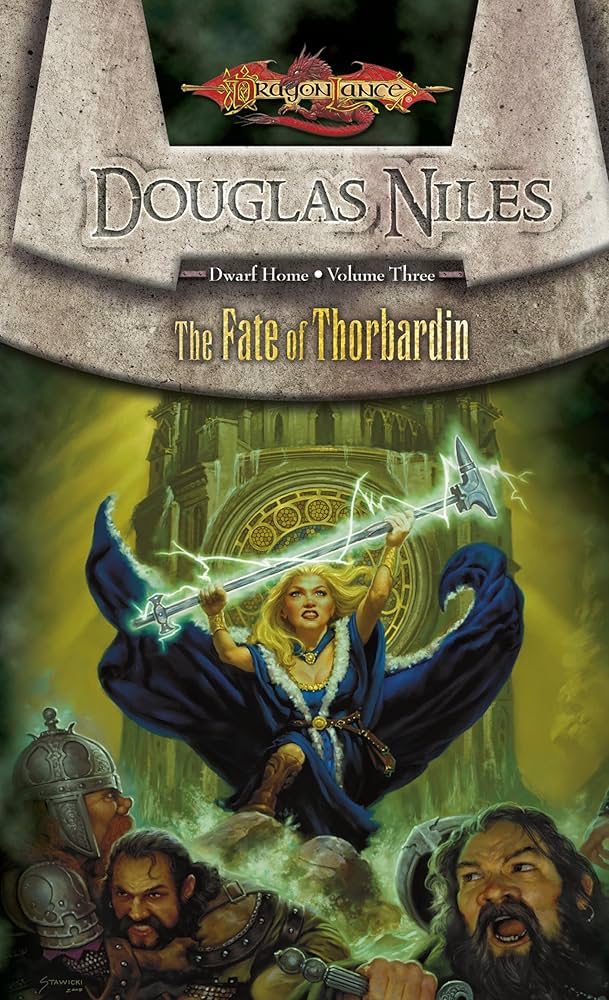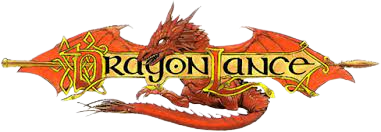The Fate of Thorbardin

Table of Contents
ToggleOverview
The Fate of Thorbardin delves into the dark, ancient halls of dwarven legend, exploring the political, cultural, and spiritual fractures threatening the survival of the mountain kingdom. Set during a volatile time when ancient grudges and recent wounds intersect, the novel tells a story steeped in prophecy, pride, and legacy.
As the last bastion of dwarven strength faces mounting internal and external threats, a group of characters becomes caught in a conflict that could determine whether Thorbardin endures—or falls into myth. The book presents a stirring, grounded tale with mythic resonance, steeped in deep dwarven traditions and Dragonlance history.
Main Character: Tarn Bellowgranite
A hill dwarf and unlikely hero with a deep sense of honor and heritage.
Tarn becomes a bridge between the warring dwarven factions—hill, mountain, and dark dwarves—often against his will.
He wrestles with loyalty to his people, the heavy burden of legacy, and the hope of restoring unity to Thorbardin.
Through Tarn, the novel explores what it means to carry the past while trying to forge a better future.
Supporting Characters
Glint Ettinhammer – A loyal companion to Tarn with a rough exterior and a dry sense of humor. Glint provides both comic relief and moral grounding in the face of betrayal and war.
Perian Cyprium – A mysterious and passionate advocate for peace and reconciliation, Perian is driven by a personal vision of what Thorbardin could become, challenging both tradition and prejudice.
Reghar Fireforge – A seasoned warrior of deep conviction, Reghar represents the martial strength of the dwarves but is haunted by the ghosts of civil wars past.
The Council of Thanes – A fractured governing body locked in political infighting, with each Thane representing a different dwarven clan. Their inability to unite mirrors the crumbling state of the kingdom itself.
Setting
The novel is primarily set in Thorbardin, the vast subterranean kingdom of the mountain dwarves, complete with its magnificent halls, ancient tunnels, and perilous chasms.
The atmosphere is heavy with dwarven history—glory and betrayal carved into the very stone walls. There are forays into surrounding territories, including abandoned hill dwarf villages and contested borderlands.
The tone is steeped in reverence and melancholy, reflecting the fading grandeur of a once-proud civilization. As tensions rise, the claustrophobic nature of the mountain halls emphasizes the pressure building within the dwarven culture.
Plot Summary
Echoes of a Kingdom
Tarn Bellowgranite is called back to Thorbardin during a time of great unease. The dwarves are divided among their ancient factions, and the Council of Thanes is paralyzed by mistrust. Civil war looms.
Tarn, bearing both hill dwarf roots and respect among mountain dwarves, is thrust into the middle of political upheaval. At the same time, a mysterious prophecy resurfaces, speaking of a reckoning that will decide the fate of all dwarves.
Fires from Within
Old rivalries erupt. The dark dwarves make bold moves to increase their power. Ancient grudges are rekindled. Tarn, along with Glint and Perian, embarks on a journey through Thorbardin’s forgotten tunnels and lost history, searching for a path toward unity.
Whispers of betrayal echo in the stone as long-buried secrets are unearthed. Tarn must choose between upholding tradition or breaking it entirely to save his people.
The Weight of Legacy
As conflict erupts and alliances shift, Tarn finds himself not only trying to avert war but to redefine what it means to be dwarven. Perian’s idealism, Glint’s loyalty, and Reghar’s hard-earned wisdom all test and shape Tarn’s vision.
The climax confronts the question at the heart of the novel: can a people divided by generations of mistrust come together, or is their doom already written in stone?
Themes
Legacy and Identity – The story asks what it means to honor your ancestors while not being shackled by their mistakes.
Division vs. Unity – From clan rivalries to personal ideologies, the dwarves must confront the cost of division and the necessity of reconciliation.
Tradition and Change – The conflict between maintaining the old ways and embracing a new vision for Thorbardin is central to the novel’s emotional weight.
Sacrifice and Leadership – Tarn must ultimately accept that leadership often demands personal sacrifice, and that heroism sometimes means compromise.
Tone & Style
The Fate of Thorbardin is written with a grounded, mythic tone. It draws deeply from dwarven culture—its rituals, politics, and personal pride—to build a world that feels lived-in and resonant.
The style is deliberate and richly descriptive, with dialogue steeped in stoic emotion. Tension builds slowly but meaningfully, culminating in powerful confrontations and moments of quiet triumph.
Reception
The Fate of Thorbardin is praised for:
Deepening the lore of dwarves in the Dragonlance universe with emotional and cultural nuance.
A strong, slow-burn narrative that respects its characters and themes.
Tarn Bellowgranite’s complex, relatable arc as a hero shaped by his people’s fractures.
Some critiques:
The pacing may feel slow for readers expecting high action or sweeping adventure.
Heavy focus on internal politics may not appeal to all fans.
Final Thoughts
The Fate of Thorbardin is a thoughtful, emotionally rich tale about what it means to belong to a legacy that no longer serves its people. Tarn’s journey is one of self-discovery, political resistance, and cultural healing. Rather than aiming for grandeur, the novel finds its power in quiet defiance, earned wisdom, and the hope that even the deepest divides can be bridged.
Recommended for:
Fans of dwarven lore and underground settings.
Readers who enjoy slow-burn fantasy with political intrigue and emotional stakes.
Anyone looking for a grounded, heartfelt tale of identity, history, and reconciliation.
